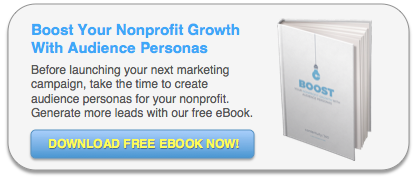
Over the last five years, you’ve likely read (perhaps literally) hundreds of blog posts and articles extolling the many virtues of content marketing—each one praising its potential to help you raise your brand visibility, build awareness for your cause, develop trusting relationships with your community, increase your thought leadership, and boost your fundraising efforts.
Sure. You've created some good content in the past, but you're still a long way from executing a fully developed content strategy and roadmap. This year, you're more energized than ever to create more content and try to reap the maximum benefits of a content marketing progam. However, the reality of the challenges—time, budget, resources—is starting to sink in, leaving you overwhelmed and a bit discouraged.
If this accurately describes your situation, yet you’re still willing to explore content marketing, here’s some advice on how to be a better nonprofit content marketer.
- Identify and understand your audience: If you haven’t already taken the time to create audience personas for your nonprofit, now is the perfect time to do so. Audience personas are fictional representations of your ideal target audience used to help you gain a deeper understanding of your audience's behaviors, motivations, and goals. Creating personas will help you segment your audience into different groups and create tailored content for each audience segment (e.g., donors, volunteers, advocates). Without audience personas, your content strategy will not be effective.
- Document your content marketing strategy: Create a documented plan with a purpose, a realistic set of goals, and benchmarks for yourself and others to follow. According to Content Marketing Institute, “nonprofit marketers who have a documented content marketing strategy are more likely to get better results with the tactics and social media platforms they use… than those who have a verbal-only or no strategy.” Whether you’re looking to increase brand or cause awareness, attract new donors, build loyalty with existing donors, or boost fundraising, it's important to focus your strategy toward meeting your goals every step of the way.
- Research topics that will resonate with your audience: One of the biggest content marketing challenges is coming up with ideas to write about. Before you can develop content that is top-of-mind with your audience, you have to put in some work. Brainstorming, keyword research, audience surveys, and social listening will help you discover which topics your audience is searching for online. Once you've decided which topics you want to cover, create an editorial calendar to begin planning and scheduling content topics for your available marketing channels. I recommend performing this task on a quarterly basis so your content topics are always timely and relevant.
- Create high quality, valuable content: Once you have a solid understanding of which topics will resonate with your audience, focus on creating fresh, relevant, useful content that informs, educates, entertains, and inspires. Your content should add value by answering your audience’s questions and offering solutions. Become a passionate storyteller by building an emotional connection between yourself and your audience as you share authentic, relatable stories about your cause and those affected by your good work. Don’t be afraid to mix things up as you consider a variety of content formats. This will keep your marketing channels fresh and your community engaged.
- Share and promote your content: There’s some stiff competition out there vying for the very eyeballs you’re trying to attract to your content. So plan to actively share and promote your content across the channels and platforms where your audience likes to hang out. Whether you’re sharing a blog post, a video, or an infographic, be sure to optimize messages for your social media platforms with links to your content so you can drive traffic back to your website. Regardless of what you may have read, email remains an effective tool for nonprofit marketing. Segment your contact database to ensure you’re emailing your content links to the exact audience you want to reach.
- Analyze your content: Despite your best efforts, a content marketing strategy is only as good as the results it yields. To measure the effectiveness of your content strategy and each individual piece of content, revisit your original set of goals and benchmarks. Find the right analytics tools available to help you measure your content performance. In the event your content doesn't perform well, try some optimization techniques before publishing your next piece of content.
- Repurpose your content: Whenever possible, consider ways to create evergreen content—content that remains relevant and/or has a long life span. Get creative by converting a popular blog post to an infographic, an inspirational quote to a static image, or a compelling interview to an audio podcast. These digital content formats can be shared across different platforms to expand your reach. Content creation is time-consuming, so you might as well get as much mileage as possible from your best performing content.
Download our free ebook to create audience personas and generate more leads for your nonprofit.


